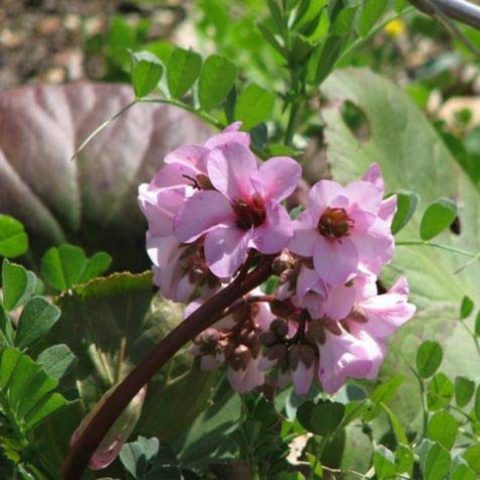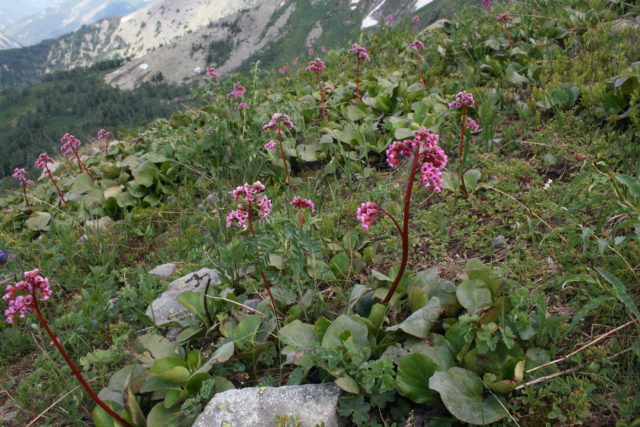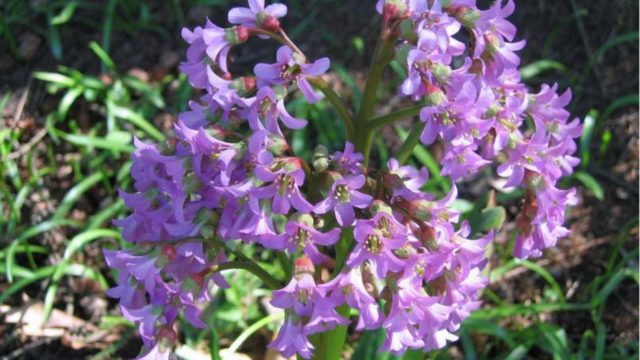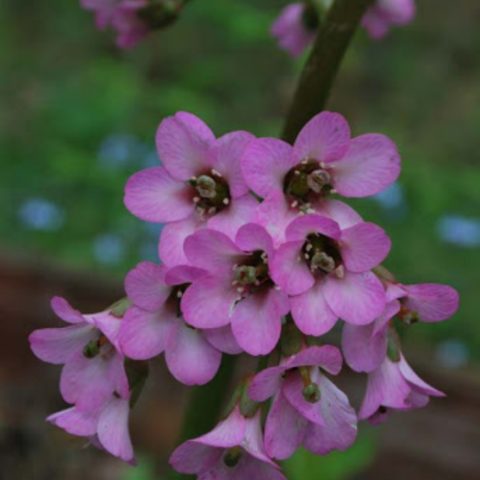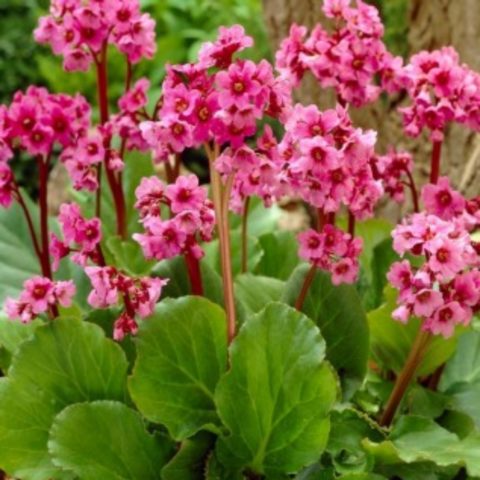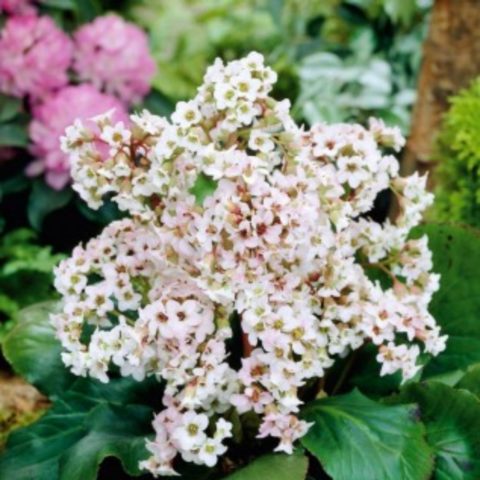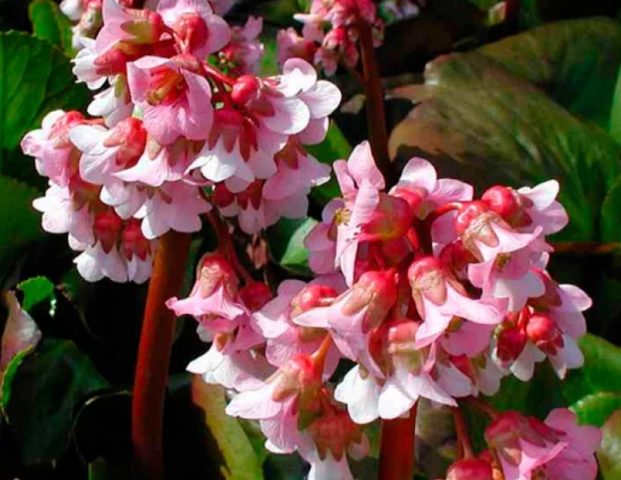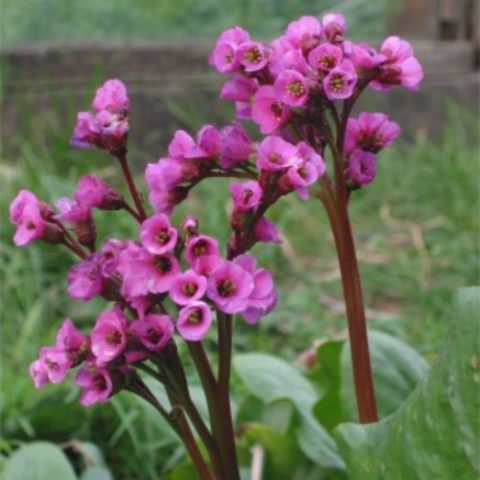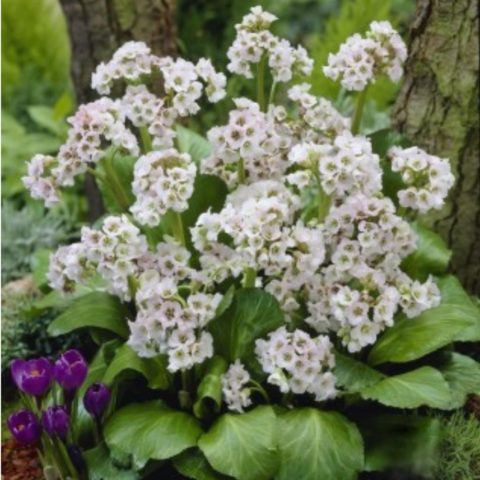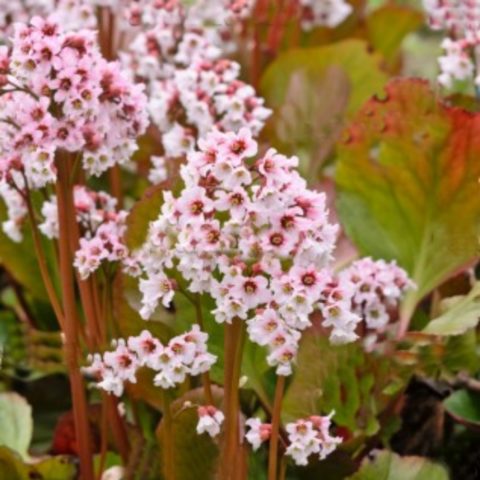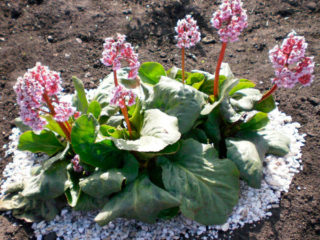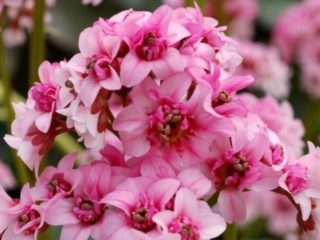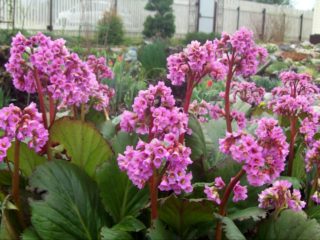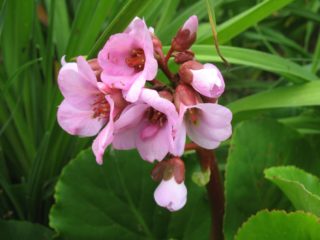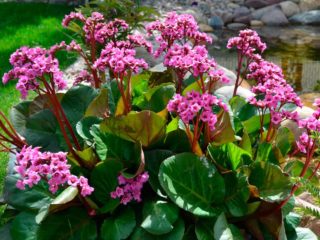Content
Every gardener dreams of decorating his garden and creating exquisite “living” compositions that will delight the eye every year. Perennials are ideal for this. And one of them is bergenia or bergenia. The culture has decorative qualities, is unpretentious in care and at the same time fits perfectly with other plants in the garden. Bergenia has been used in landscape design recently and has not yet become widespread.
What does incense look like?
Bergenia is a perennial herbaceous shrub, a representative of the Saxifraga family. The culture has about 10 varieties. Of these, two can be found in Russia, and the rest grow in Central Asia.
The plant forms a powerful root system located close to the soil surface. It consists of thick brown shoots with a diameter of 3.5 cm. They grow up to several meters in length. The root system of bergenia is fibrous, highly branched, but in the end the shoots are all connected into a vertical root.
The perennial produces a thick, leafless stem of a greenish-red hue.Its height depends on the species and can reach 15-50 cm. The plant has dense thickened leaves, which are collected in a rosette. They have a round or heart-shaped shape, a shiny surface, for which people gave the name “elephant ears” to bergenia. There may be vague jaggedness along the edge. The length of the leaves varies from 3 to 35 cm, and the width is 2.5-30 cm.
The plates are evergreen, so the plant remains decorative throughout the year, which allows it to be used in landscape design. The shade of bergenia leaves is dark or light green, depending on the variety. With the arrival of autumn, it acquires a reddish tint.
The flowers of bergenia are small, about 2 cm in diameter. They are collected in paniculate-thyroid type inflorescences. The shade of the petals can be:
- pink;
- raspberry;
- white;
- red.
At the same time, the color of flowers and peduncles sometimes differs, creating an unusual contrast. The combination comes in a milky shade with dark ruby.
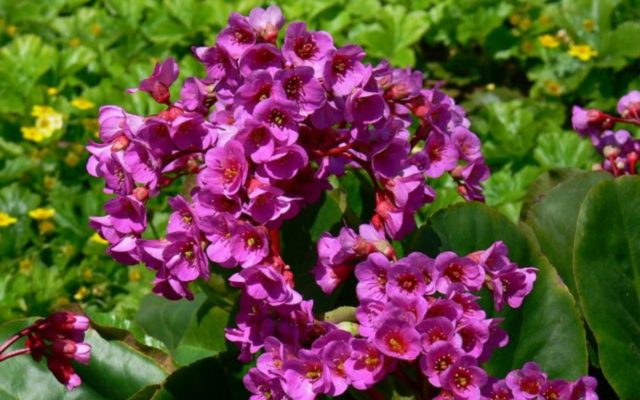
Bergenia can grow in one place without transplantation for 10-12 years
Bergenia is ideal for planting along paths and as a foreground plant in flowerbeds and flowerbeds. In landscape design, the plant is also used to decorate ponds, and as one of the elements of a large mixborder.
The use of bergenia in the country allows you to disguise unsightly areas. A single perennial bush, growing over 5-6 years, is capable of covering an area of 0.5 square meters. m. When placing seedlings 9 pcs. per 1 sq. m area, complete closure of plants can be achieved after 4 years.Such a living lawn in landscape design should be used at the foot of a large tree.
Bergenia can also be used as a spectacular border. To do this, it is enough to plant the seedlings in a row at a distance of 25-30 cm, and already in the third year they will close together, and after 5 years its width will be 60-80 cm. Such a border can be used in landscape design to delimit separate zones, duplicating the fence, which will allow inhibit the growth of weeds from outside.
When using bergenia, it is necessary to take into account that when planted in a shady place, the plant will actively grow greenery, but to the detriment of flowering. And if placed in a sunny place, the size of the leaves will decrease, but the number of peduncles will increase.
The most beautiful types and varieties
Among the 10 known species, only a few of them have gained popularity as ornamental plants for landscape design. They are similar to each other in many ways. But they also have characteristic differences. Therefore, each should be considered separately.
The most beautiful views:
- Cordifolia bergenia. This variety of crop got its name from the shape of its leaves. The height of the perennial does not exceed 40 cm. The leaves have a dense structure and a dark green hue. The flowering period begins in the last ten days of May. The inflorescences are racemose, somewhat inclined, the color of the petals is pink and lilac. This species has high winter hardiness and can easily withstand temperatures down to -40 degrees, therefore it is considered one of the most popular species in landscape design. Cultivated since 1779. Flowering duration is 3 weeks.
- Thick-leaved bergenia. The height of this plant reaches 50 cm. The leaf blades are broadly oval, up to 35 cm long. Their surface is leathery. The lifespan of each leaf is 2-3 years.The flowering period occurs in May-June, depending on the growing region. Peduncles of this species are resistant to cutting. The color of the petals can be pink, creamy lilac. The flowers of thick-leaved bergenia are bell-shaped with petals up to 12 mm long. The inflorescences are dense, so they look impressive when combined with hostas in landscape design. Flowering duration is 20-28 days.
- Pacific bergenia. The perennial produces ovoid, bare leaves of light green color with a shiny surface and a convex central vein. The edge of the plates is slightly serrated and notched, which goes well with other garden crops in landscape design. The petiole leaves of the Pacific bergenia are collected in a basal rosette. Their length is 20 cm and width is about 9 cm. The petioles of this species are much shorter than the plates. Renewal of overwintered leaves occurs annually. At the same time, they acquire a reddish-brown tint, which gives the shrub an elegant look. Pacific bergenia blooms in early spring after the snow melts. Its duration is 2-4 weeks.
- Badan Schmidt. The perennial was obtained by crossing a ciliated and a thick-leaved species, so it is impossible to meet it in natural conditions. The plant is widely used in landscape design in European countries. The shrub has strong growth. It forms oval-shaped leaves of a dark green rich shade, the length of which reaches 25 cm and the width - 15 cm. The plates of Schmidt's bergenia have a jagged edge and have long petioles. The flowers are bright pink in color, located on short inflorescences, which initially droop and then acquire a vertical or horizontal position. By the time cold weather arrives, the foliage becomes red with a brown tint.
- Badan Strechi. The shrub has lance-shaped oblong leaves with a serrated edge. Their length reaches 10 cm and width - 5 cm. The height of an adult plant reaches 40 cm. Flowering later in July-August. The color of the petals can be white or lilac-pink. Inflorescences are racemose.
In landscape design, hybrid varieties obtained from wild forms of bergenia are in demand. Thanks to the efforts of breeders, they are distinguished by a variety of colors, height of bushes, length of leaves and flowering period.
Important! Bergenia with rocky boulders looks ideal.
The most beautiful varieties:
- «Abendglut» – the height of the bush is 25-30 cm, the shade of the petals is pink-red, the flowers can sometimes be semi-double, the color of the leaves is light green, and by autumn it acquires a bronze tint;
- «Bressingham White» – the height of the bergenia is 30 cm, the petals are white, the leaves are rounded and light green in color;
- «Baby Doll" - a compact plant, 30 cm high, flowers have the ability to change shade from light pink to beige, the foliage is round, light green;
- «Glockenturm» – the shrub grows up to 50 cm in height, its leaves are a beautiful emerald color, the color of the petals is pink, the appearance is suitable for cutting;
- «Scheekoenigin» – a tall hybrid (50 cm), has light peduncles, the edges of the leaf blades are wavy, the color of the petals can vary from white to slightly pinkish;
- «Frau Holle“- a spreading shrub, with reddish peduncles, racemose inflorescences, white, the shade of the leaves with the arrival of cold weather changes from swamp to lilac-crimson.
Photos in landscape design
Depending on the placement of the bergenia on the site, dacha, or garden, it may look different. How it looks in landscape design, and what compositions can be created with its help, is clearly shown in the proposed photos.
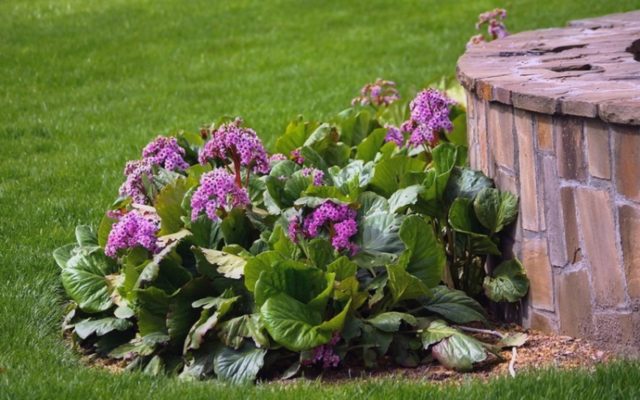
The culture looks good as a tapeworm
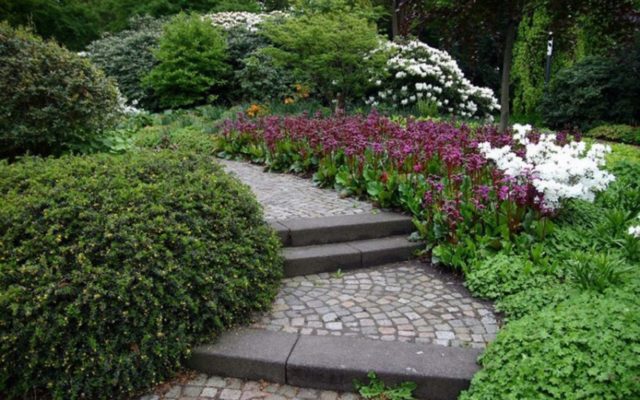
Bergenia looks spectacular along garden paths
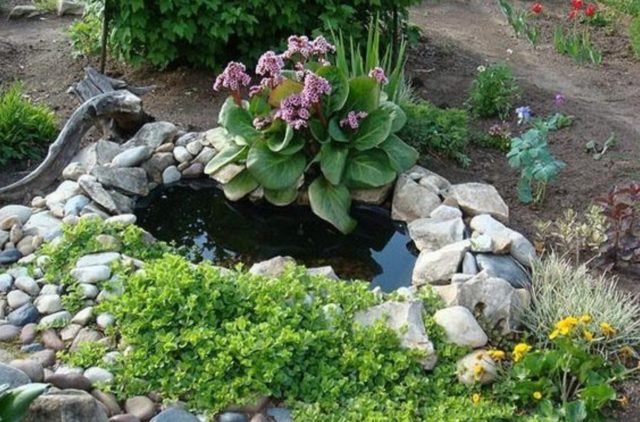
Bergenia can be planted near bodies of water
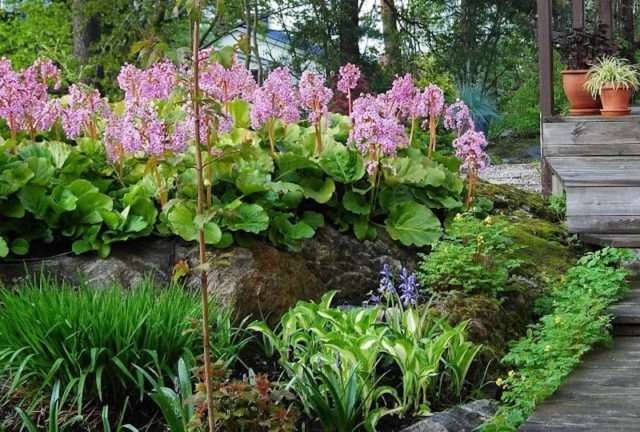
Badan is also ideal with rocky boulders
What colors does incense go with?
This shrub can act as a tapeworm in landscape design, and also grow in group plantings. In the first case, it looks great against the background of a green lawn. Various types of conifers can successfully highlight the beauty of a perennial. The Far Eastern maple can also serve as a background for it.
Landscape design experts recommend combining bergenia in the garden with mountain ash, bird cherry, Chinese lemongrass, rhododendron, and euonymus. When creating group compositions, you need to select partners who can complement each other in terms of flowering time and foliage shade.
This perennial goes well with the following garden crops:
- small-bulbed spring flowers (blues, crocuses);
- white flowers;
- lilies;
- hosts;
- irises;
- hazel grouse;
- swimsuits;
- lunar tree coming to life;
- lungwort;
- perennial carnations;
- geraniums;
- Carpathian bell;
- low growing phlox.
Conclusion
Bergenia is not yet widespread enough in landscape design in our country, but the popularity of the plant is already gaining momentum. After all, few perennials can boast the same characteristics as this crop. And its unpretentiousness allows even novice gardeners to grow bergenia, since caring for it does not involve complex actions, but at the same time the plant remains decorative throughout the year.
